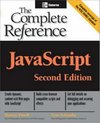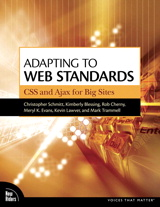作者:Brad Abrams, Tamara Abrams
出版日期:August 23, 2005
出版社:Addison Wesley
页数:512
ISBN:0-321-19445-4
文件格式:CHM
“This is a complete, authoritative, and truly useful reference forevery .NET developer. It covers every aspect of .NET Framework libraryby providing concise descriptions with just the right number ofexamples. I would not start development of any significant .NET projectwithout having this book on my bookshelf.” —Max Loukianov, VicePresident of Research and Development, Netpise Inc.
“The .NET Framework Standard Library Annotated Reference is the onereference you really need when you use the .NET Framework library. Theannotations provide clear insight into the design choices that thelibrary development team made when building the library. Thoseexplanations will guide you to the best design choices for your ownapplication code.” —Bill Wagner, Founder/Consultant, SRT Solutions, andauthor of Effective C#
“More than just a reference, this book provides great insight intothe massive amount of thought that went into designing the Microsoft.NET Framework. It is both entertaining and educational, combininginteresting and sometimes amusing annotations along with the referencematerial.” —Jordan Matthiesen, Software Engineer
“Brad Abrams, Tamara Abrams, and the CLR team take readers on ajourney through the backstreets of the .NET Framework, pointing outinvaluable design decisions and performance best practices along theway. Not to be missed by any developer who has ever wondered why theFramework is designed the way it is.” —William D. Bartholomew, SeniorSoftware Architect, Orli-TECH Pty Ltd
“This volume provides an in-depth review for every class methodlisted, including a CD with many examples of usage. The most valuableaspect of this book is the annotations provided; the annotators'thoughts about the design of the .NET Framework lets the reader developa crystal-clear understanding of what can be accomplished with thisfantastic technology.” —Bradley Snobar, Software Engineer
“The utility of a reference book is often a function of how easilyyou can find a desired subject and, once there, how clearly is itexplained. On both counts, you should find that this book stands well.”—Dr. Wes Boudville, Inventor
The .NET Framework Standard Library Annotated Reference, Volume 2,completes the definitive reference to the .NET Framework base classlibrary. This book-and-CD set offers programmers unparalleled insightinto the ECMA and ISO specifications for the classes and members, whilealso explaining why they were designed as they were and demonstratinghow to use them. This volume covers the Networking, Reflection, and XMLlibraries, complementing Volume 1's coverage of the Base Class andExtended Numerics libraries.
The printed book contains high-level descriptions of each namespace,plus detailed descriptions and samples of each type, includingannotations, inheritance diagrams, and a listing of members.
The accompanying CD contains a vastly expanded version of the book'stext that includes detailed descriptions of each member and samples formost members—almost two thousand searchable pages of immediately usefulreference material, plus a full source-code archive.
With the ECMA and ISO standards as its core, the combined book and CD include
A clear and complete overview of each namespace, describing itspurpose and functionality and the inheritance hierarchy of types itdefines.
Type descriptions. Each type is covered in its own chapter, with aquick reference to the C# declaration syntax for all members defined inthe type, and a detailed description of how the type is used.
Annotations from key insiders: members of the Microsoft design teamand the ECMA Standards Committee. These comments cover everything fromdesign rationale and history to common problems and shortcomings, withexceptional clarity and candor.
Reference tabs and an exhaustive index, which allow readers to quickly and easily navigate the text.
Code samples. Types are illustrated by working code samples, with output included.
Reusable source code for the more than one thousand samples issupplied as an archive on the CD. All code has been tested withversions 1.0, 1.1, and 2.0 of the .NET Framework and, whereappropriate, with the .NET Compact Framework.






 评论 (1)
评论 (1) 